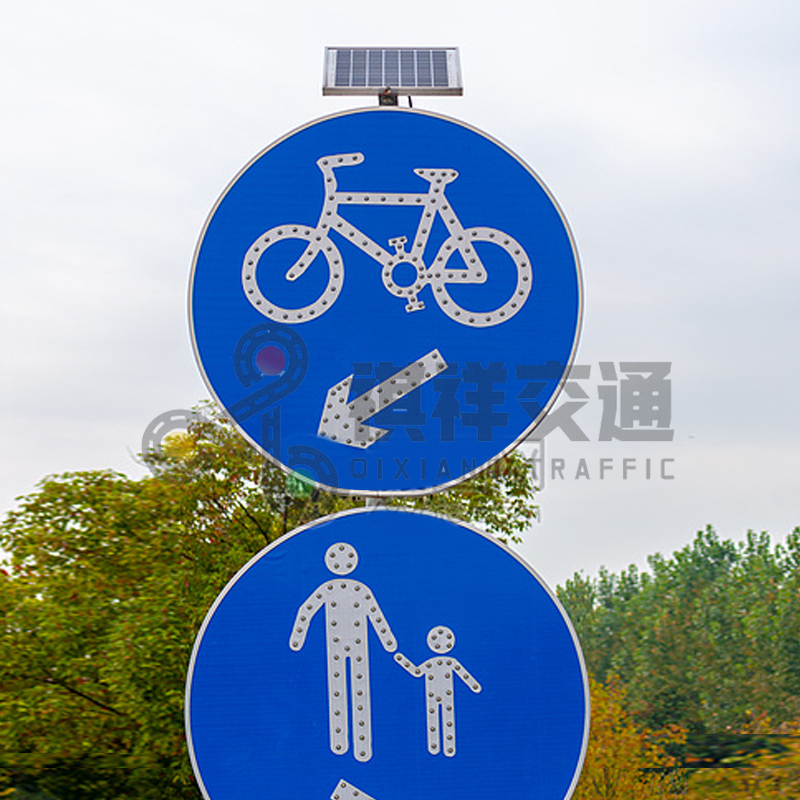As the world continues to adopt sustainable and environmentally friendly solutions, the use of solar traffic signs is becoming more and more common. The signs are powered by solar energy and offer a range of benefits including reduced environmental impact, cost savings and improved road safety. Looking to the future, it’s clear that solar traffic signs will play an important role in shaping transportation infrastructure. In this article, we’ll explore the current state of solar traffic signs and potential future advancements.
In recent years, the use of solar energy in traffic signs has gained momentum due to advances in solar technology and an increasing focus on sustainability. Traditional traffic signs are often powered by electricity, which is not only costly but also taxing on the environment. In contrast, solar traffic signs harness the sun’s energy, making them a more sustainable and cost-effective alternative. By harnessing solar energy, the signs can operate independently of the grid, reducing reliance on non-renewable energy and lowering operating costs.
One of the main advantages of solar-powered traffic signs is their ability to function in remote or off-grid locations. In areas where electricity supply is limited or non-existent, solar signs provide a practical solution for enhancing road safety and communication. This is particularly beneficial for rural or developing areas that may lack traditional infrastructure. By harnessing the power of the sun, these signs can provide necessary traffic guidance without the need for extensive electrical infrastructure, making them a versatile and easy-to-use option for a variety of environments.
In addition to the environmental and practical benefits, solar traffic signs can also help improve road safety. By harnessing solar energy, these signs can remain operational during power outages or emergencies, ensuring drivers always have access to critical traffic information. This resiliency is especially valuable in situations where reliable communications are critical to preventing accidents and managing traffic flow. Furthermore, the use of solar signs can contribute to a more sustainable and resilient transport network, in line with the wider aim of creating safer and more efficient roads.
Looking ahead, the future of solar traffic signs promises further innovation and advancement. As solar technology continues to evolve, we expect to see improvements in efficiency, durability, and integration with intelligent transportation systems. Advances in solar panel design and energy storage solutions may lead to more compact and powerful solar-powered signs, allowing greater flexibility in their deployment and functionality. Additionally, the integration of smart sensors and connectivity can enhance the functionality of solar signs, enabling real-time data collection and adaptive traffic management.
Furthermore, the potential for integrating renewable energy into transportation infrastructure extends beyond the scope of individual signs. Solar systems can be integrated into larger transportation networks, providing a sustainable energy supply for traffic management systems, street lighting and other important components of the urban landscape. This holistic approach to sustainable transport infrastructure is in line with broader trends in smart and eco-friendly urban development, in which renewable energy plays a central role in creating more resilient and efficient urban environments.
In the area of innovation, the concept of solar traffic signs can also be extended to the use of advanced materials and design principles. For example, the development of solar-integrated pavements or smart road markings could provide new opportunities to harness solar energy and enhance the visibility and functionality of traffic guidance systems. These innovative approaches have the potential to change the way we perceive and utilize solar power in the transportation sector, paving the way for more integrated and sustainable road infrastructure.
As we consider the future of solar traffic signs, it’s important to recognize the wider impact of sustainable transportation solutions. The adoption of solar signs represents a step towards creating a more resilient, energy-efficient and environmentally friendly transportation system. By harnessing the power of the sun, we can improve the safety, reliability and sustainability of our roads, ultimately creating a more connected and sustainable future for transportation.
In summary, the future of solar traffic signs promises to revolutionize the way we achieve road safety, energy efficiency and sustainable transport infrastructure. As solar technology continues to advance and the focus on sustainability grows, we expect continued innovation in the design, functionality and integration of solar traffic signs. By harnessing the potential of solar energy, we have the opportunity to create safer, more resilient and greener roads, shaping a future where sustainable transport is at the forefront of urban development.
Post time: Aug-23-2024







